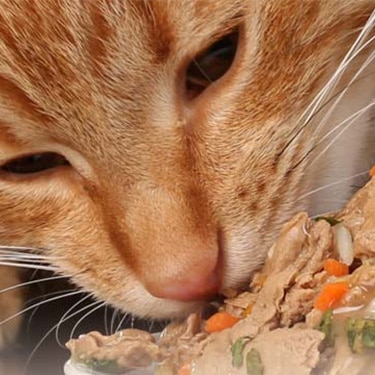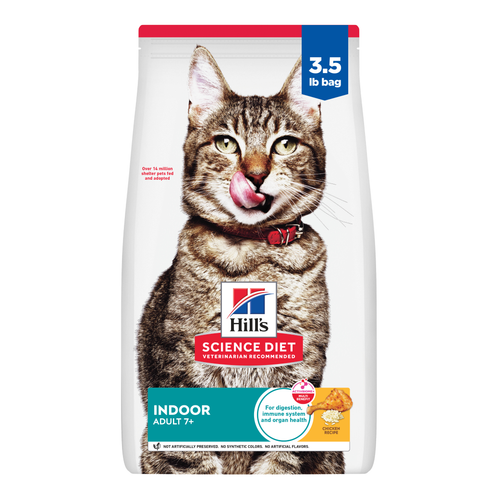
-
Find the right food for your petTake this quiz to see which food may be the best for your furry friend.Find the right food for your petTake this quiz to see which food may be the best for your furry friend.Featured products
 Adult Chicken & Barley Recipe Dog Food
Adult Chicken & Barley Recipe Dog FoodSupports lean muscle and beautiful coat for adult dogs
Shop Now Hill's Science Diet Adult Chicken & Beef Entrée Dog Food
Hill's Science Diet Adult Chicken & Beef Entrée Dog FoodChicken & Beef Entrée in a delicious loaf with complete & balanced nutrition to help keep adult dogs active and healthy
Shop Now Adult Large Breed Chicken & Barley Recipe Dog Food
Adult Large Breed Chicken & Barley Recipe Dog FoodSupports healthy joints, lean muscle, and beautiful coat for large breed dogs
Shop NowFeatured products Senior Vitality Adult 7+ Tuna & Vegetables Stew
Senior Vitality Adult 7+ Tuna & Vegetables StewImproves Everyday Ability to Get Up & Go
Shop Now Adult Tender No Corn, Wheat, Soy Chicken & Vegetables Stew Cat FoodShop Now
Adult Tender No Corn, Wheat, Soy Chicken & Vegetables Stew Cat FoodShop Now Adult Turkey & Liver Entrée Cat Food
Adult Turkey & Liver Entrée Cat FoodPrecisely balanced nutrition with the delicious taste of minced turkey & liver to help fuel the energy needs of cats during the prime of their life
Shop Now -
Dog
- Dog Tips & Articles
-
Health Category
- Weight
- Food & Environmental Sensitivities
- Urinary
- Digestive
- Joint
- Kidney
-
Life Stage
- Puppy Nutrition
- Adult Nutrition
- Senior Nutrition
Cat- Cat Tips & Articles
-
Health Category
- Weight
- Skin & Food Sensitivities
- Urinary
- Digestive
- Kidney
-
Life Stage
- Kitten Nutrition
- Adult Nutrition
Featured articles The Science Behind Our Love for Pets
The Science Behind Our Love for PetsLearn the scientific reasons why we have such strong connections with our pets, and what science says about the love between humans and our furry friends.
Read More What Is Littermate Syndrome? Pet Adoption Guide
What Is Littermate Syndrome? Pet Adoption GuideLearn more about littermate syndrome in dogs and cats and how to successfully navigate adoption and early socialization processes.
Read More How to Properly Mix Wet & Dry Pet Foods
How to Properly Mix Wet & Dry Pet FoodsAn Orange cat eating from a bowl filled with mixed food
Read More -


Cats are expressive creatures who use verbal and nonverbal language to communicate with their pet parents. Learning how to interpret your feline friend's behavior will reveal a lot about their cat ear emotions and the important role ears play in conveying information.
Just as cat tail language reveals what a cat is thinking and feeling, cat ears move with emotion, too. "Like a sophisticated satellite dish turning to pick up a signal, the cat's external ear, or pinna, rotates up to 180 degrees to locate and identify even the faintest of squeaks, peeps or rustling noises," said Animal Planet.
With close observation, you'll notice a pattern of various cat ear emotions revealed by even the subtlest gesture.
Neutral
When a cat's just being a cat, their ears are facing forward in what's called the neutral position. Neutral ears indicate that a cat is feeling happy and relaxed and wants to chill out. When your cat's ears are in neutral, it's a great time to take advantage of their friendly mood, so now's the time to carefully pick up that cat and get your snuggles!
Straight Up and Forward
A cat will move its ears into this alert position when they want to pay closer attention to what's going on around them. Your cat wants to know, "What's that noise? Who's there? What's going on?" Sometimes, their ears are even facing different directions! Cats who are inclined to patrol their home exhibit this ear position and make great guard cats. In addition to "confident, curious cats," pointed out PAWS Chicago, "a cat who is hunting or playing will also keep [their] ears forward to collect as much auditory information as possible to execute a successful pounce." Are your cat's ears pointed up? Engage them in some fun.
Twitching
A cat whose ears rotate with quick, sudden movements is a cat who is on a mission. As an extension to the "straight up and forward" move, a cat will move their ears back and forth (and shake their backside) when they're ready to execute the attack. This is another great opportunity to indulge your cat's hunting instincts, being sure to direct their attention to toys and not your feet. If your cat twitches frequently and paws at their ears, contact your veterinarian to rule out ear mites or other underlying health problems.


Tasty Tips
Low and Sideways
If your cat's ears are flattened against their head in "airplane mode" — as if they're about to take off in flight — it means that they're frightened or nervous, and it could lead to aggressive behavior. When a cat's ears are in this position, the cat is telling you that they're uncomfortable and need some space. Your cat may hide in their favorite spot until they're feeling more secure, so it's important to respect their bubble and their privacy.
Low and Facing Out
In this position, a cat may be signaling that they're not feeling well, said Best Friends Animal Society. Cats are experts at hiding an illness, but this ear position helps to identify if they're under the weather. If you suspect that your cat isn't feeling so hot, pay close attention to other possible signs of illness, including observation of their eyes and tail, and share your concerns with your veterinarian.
Low and Flat
There is no doubt about which cat ear emotions are associated with this position. Basically, it translates to "step off" and is indicative of potential aggressive behavior to come, including biting or scratching. In multiple cat households, you may see this when cats are tussling. If it happens, keep an eye on the cats and discourage aggressive play. It's in the best interest of humans to walk away from a cat when their ears are in this position, or you could risk getting injured.
When it comes to understanding a cat's body language, the ears have it. Cat ears move with emotion and purpose, opening up the lines of communication between you and your furry friend.


Christine O'Brien is a writer, mom, and long-time cat parent whose two Russian Blues rule the house. Her work also appears in Care.com, What to Expect, and Fit Pregnancy, where she writes about pets, pregnancy, and family life. Find and follow her on Instagram and Twitter @brovelliobrien.
Related products

Supports energy level and beautiful fur in mature indoor cats


Precisely balanced nutrition with the delicious taste of minced turkey & liver to help fuel the energy needs of cats during the prime of their life

Improves Everyday Ability to Get Up & Go
Related articles

Discover how to train your cat, starting with very basic first steps that both reward good behavior and discourage the bad.

Learn how to litter train a kitten with this guide to potty training, including when to start litter training kittens and troubleshooting tips.

When you adopt a cat, you don't just gain a best friend; you also save her life. Here's why getting a cat from a local animal shelter makes so much sense.

Discover which cat toys games your feline friend might like, and how they are great sources of exercise. Explore our library of articles to learn more.

Put your cat on a diet without them knowing
Our low calorie formula helps you control your cat's weight. It's packed with high-quality protein for building lean muscles, and made with purposeful ingredients for a flavorful, nutritious meal. Clinically proven antioxidants, Vitamin C+E, help promote a healthy immune system.
Put your cat on a diet without them knowing
Our low calorie formula helps you control your cat's weight. It's packed with high-quality protein for building lean muscles, and made with purposeful ingredients for a flavorful, nutritious meal. Clinically proven antioxidants, Vitamin C+E, help promote a healthy immune system.



